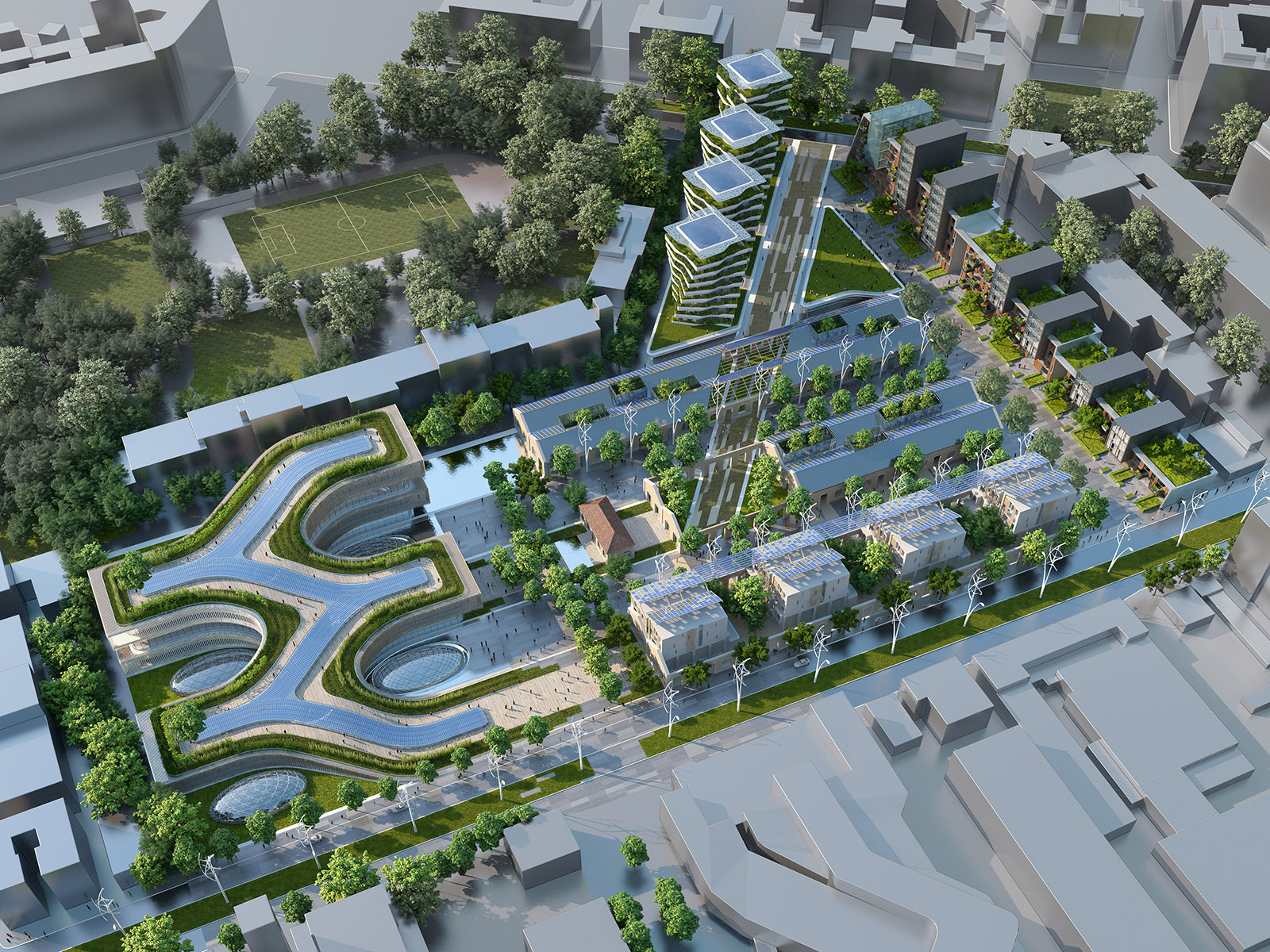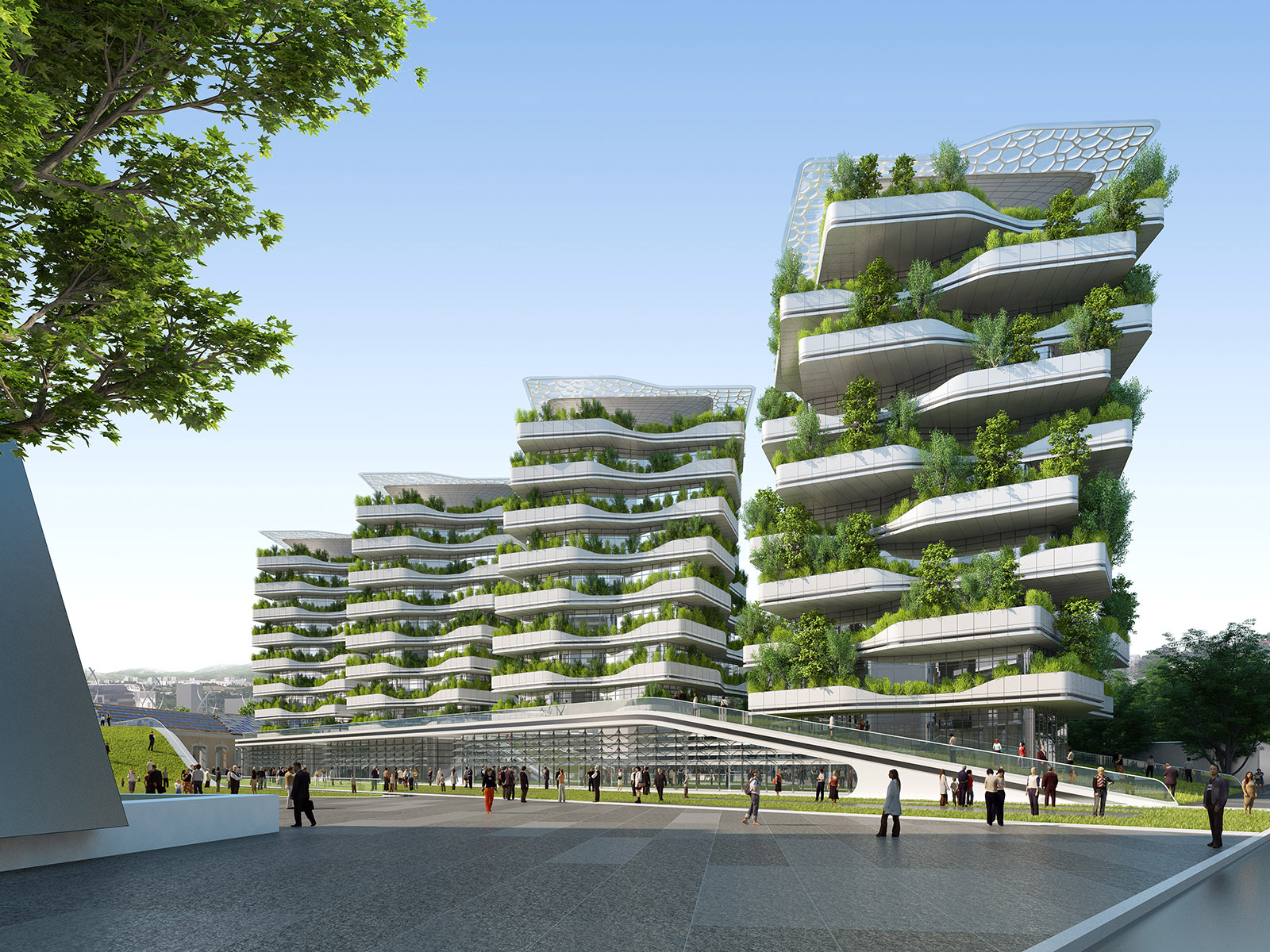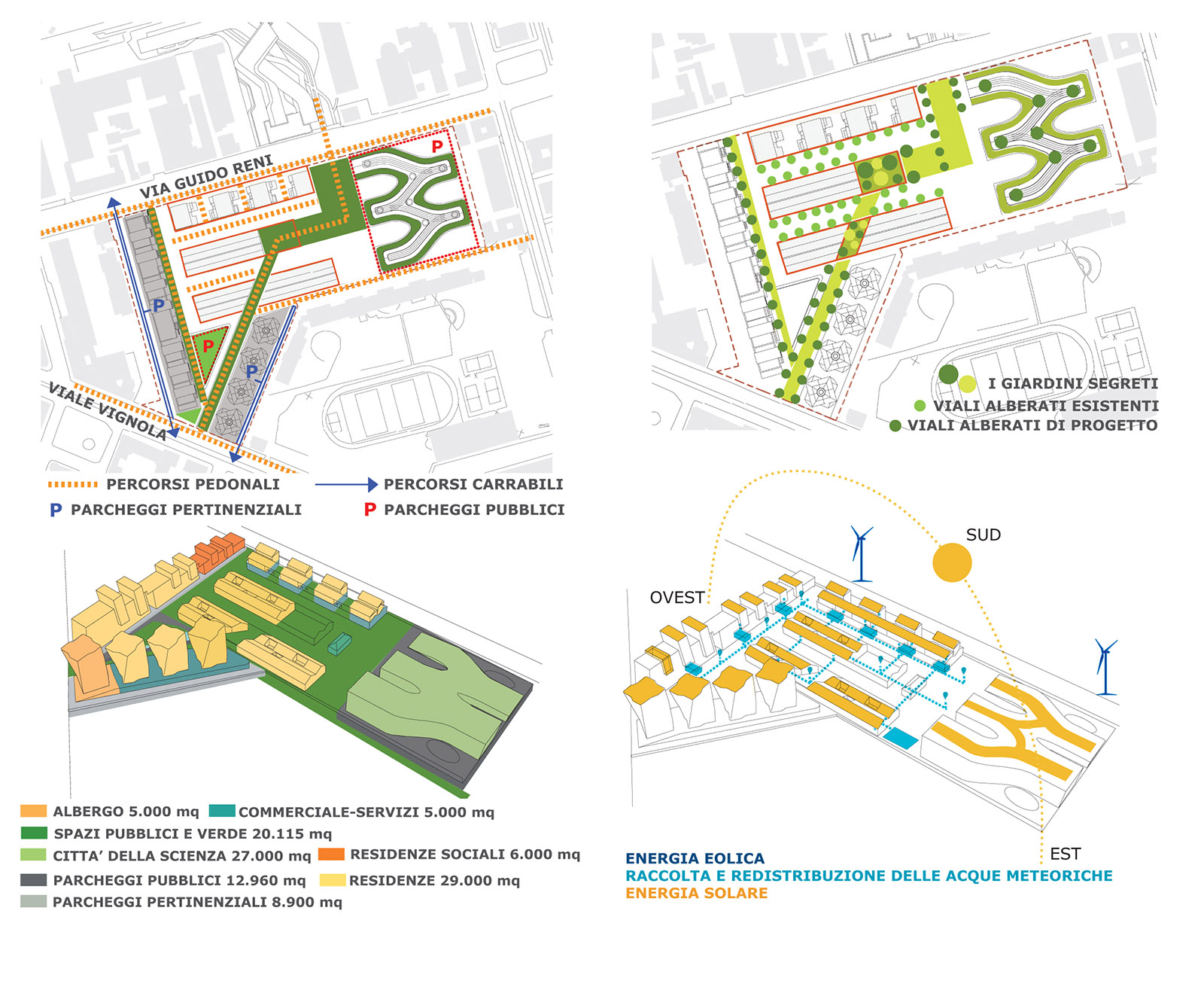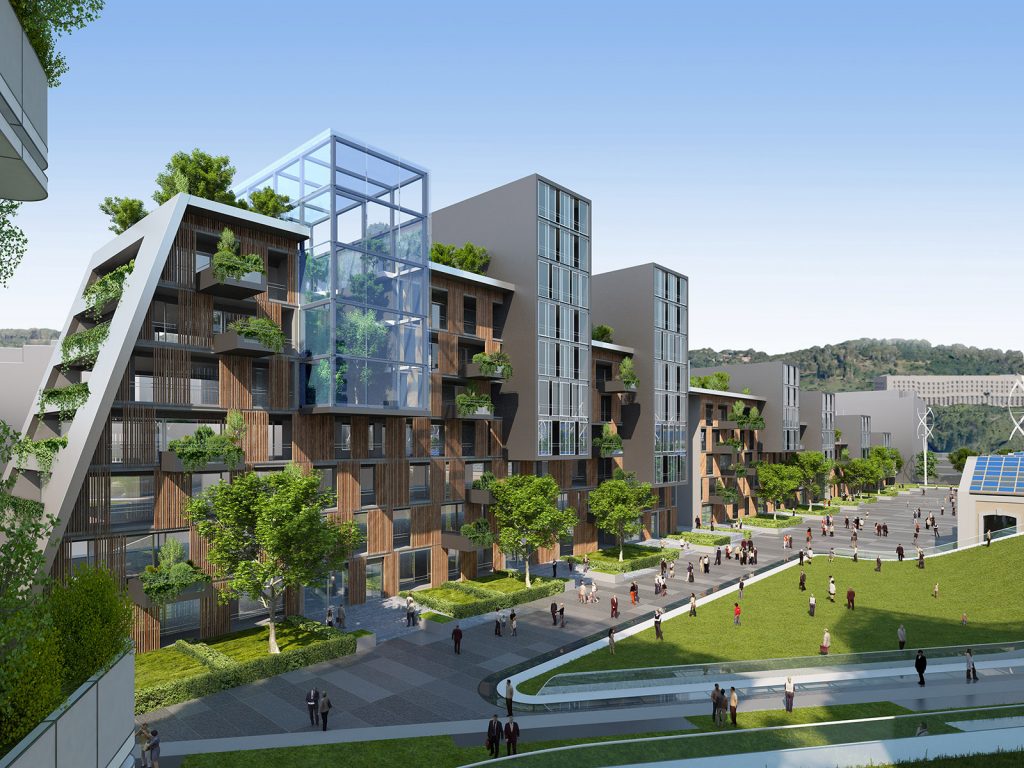CITTA DELLA SCIENZA
Roma 2015
The ambition of the master plan for the new « Città della Scienza » is to transform the industrial district into a self-sufficient urban ecosystem. The project aims at becoming an example of new urbanization placing great emphasis on sustainability. In addition to building functions and visual appeal, it encourages the promotion of sustainable design, low carbon transportation, renewable energies, automation technologies, and new green building materials.

Inspired by the Land Art, the eco-architecture makes itself metabolic, fertile and creative! Facades are covered of free edible plants and become like epidermises, intelligent, self regenerational and organic. Roofs and balconies become new grounds of a green city. The orchards and food gardens are not placed side by side with the new buildings anymore, they are the buildings of this eco-masterplan! To adapt form to function, to bet on biodiversity, to program the multi-functionality, to encourage multi-culture and self-management, these are the keys of an urban and social success to initiate the symbiosis within the couple « Human-Nature » in Roma ! The area is crucial in the process of regeneration of the urban area centered on the axis of via Guido Reni linking the Maxxi and the Auditorium in the North of Roma. It seems appropriated to build the project proposal combining the memory of the original urban fabric of the neighborhood with innovative eco-responsible lifestyles. It results in a new organization of the site with a strong green footprint that regenerates his industrial past and articulates the green architecture features. The master plan offers contemporary large public spaces and a dynamic social mix presenting high values in terms of urban centrality and connectivity between the different identities and cultural spots of the district.

The six fundamental principles of the design are as following: 1. Correlation with the context and the industrial history: Crossing the area, a grid of permeable public spaces grafts all the paths from piazza Melozzo da Forlì, from piazza Mancini, from the Via Flaminia, and from the MAXXI square. Inside, the tree-lined avenues are kept, like fingerprints, the pre-existing industrial buildings envelopes transformed into magnificent lofts. Most of the residences and commercial spaces are aligned along the edge of the site to give form and consistency to the great original block. 2. Articulation of various public spaces, building types and architectural languages: The system of public spaces, despite its variety, forms a unitary structure characterizing strongly the project from the point of view of beauty and quality of life. The variation of building types, scales and architectural languages presents an obvious additional aesthetic quality. The entire site is pedestrian! Regarding to the mobility, the private accesses to the underground car parks (on maximum two levels under residential buildings) are systematically located on the edges of the area. Public car parks are located under the square facing to viale del Vignola and under the building of the Città della Scienza. 3. Flexible and multi-functional urban spaces: The functions, as reflected in the master plan, bind the transformations induced by the diagonal pathway: retail stores, ateliers for artists and craftsmen, small art galleries, bars and restaurants, neighborhood services, all the needs of the city's events and exhibitions of science are thought in order to not disturb the privacy and the intimacy that must characterize the residential spaces. 4. Cityscape full of trees ("trees of shadow and harmony" - l. Sciascia): The intensive planting of mature trees is designed not only for their intrinsic beauty, but also for the positive environmental effects (reduction in CO2, particulate removal, microclimates in public spaces). All the roofs and balconies of each new buildings become communitarian orchards and/or food and aromatic gardens to design a flourishing and fertile master plan. 5. Bio-sustainability of urban plants and buildings : The landscape architecture (Land Arch) aims at reaching the following green features : the recovery of rainwater for irrigation of public and private green areas, photovoltaic electricity production, the domestic hot water production by solar tubes, the control of microclimates in public spaces (daylight and shadow), the municipal solid waste recycling on site by biomass, the energy-efficient buildings (treatment of facades with respect to guidance), and finally the lighting appliances with integrated micro-wind turbines. 6. Social mix of dwelling units: The master plan proposes a large choice of apartments scales in different building types taking into account the expected diversification of housing demand. CREDITS: COFFICE ARCHITECTURE – VINCENT CALLBAUT ARCHITECTURE LOCALIZATION: ROME ARCHITECTS: PAOLO COLAROSSI (TEAM MANAGER) , FRANCESCO COLAROSSI, VINCENT CALLEBAUT, LUISA SARACINO, MASSIMILIANO FOFFO, MARCO MARIA SAMBO, ANDREA MORALES, FABIO BRIGUGLIO






